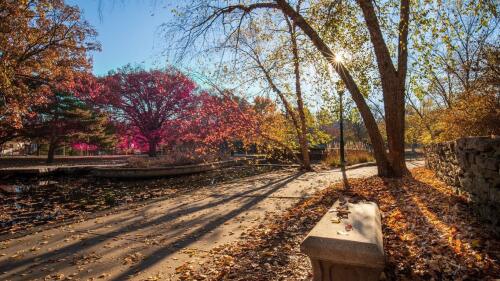You love local food, music, business, and art — so while you’re planning your garden this spring, why not choose local plants, too?
Native plants are naturally adapted to the local climate, provide sustenance to native wildlife, and save water by thriving on normal rainfall. Plus, they’re more visually diverse than, say, lawn grass.
Consider planting some Kansas and Missouri flora this spring. We’ll get you started.
Black-eyed Susan
Rudbeckia hirta
Water needs: Moist, Dry
Light needs: Sun
Bloom time: March-November
Growing tips: Black-eyed susan can become aggressive without competition, so consider planting it alongside other plants on this list.
Attracts: Birds, butterflies (Bordered Patch + Gorgone Checkerspot)
Butterfly Milkweed
Asclepias tuberosa
Water needs: Moist, dry
Light needs: Sun, shade, part-shade
Bloom time: May-September
Growing tips: Butterfly weed attracts aphids, which you can deal with by spraying with soapy water, blasting with high-pressure streams, or by leaving the aphids for ladybugs.
Attracts: Hummingbirds, butterflies (Monarch + Grey Hairstreak)
Common Blue Violet
Viola sororia
Water needs: Moist
Light needs: Sun, part-shade
Bloom time: March-May
Growing tips: Violets grow easily in well-drained soil, but watch out for a violet takeover if growing conditions are too ideal.
Attracts: Birds, small mammals — humans can also cook or candy violets to eat
Purple Coneflower
Echinacea purpurea
Water needs: Dry
Light needs: Sun, part-shade
Bloom time: April-September
Growing tips: Suited to northeast Texas, purple coneflower thrives in lean soil with ~six hours of direct sunlight daily.
Attracts: Hummingbirds, butterflies
Wild Red Columbine
Aquilegia canadensis
Water needs: Moist, dry
Light needs: Shade, part-shade
Bloom time: February-July
Growing tips: Plant columbine in thin, well-drained soil to ensure a long lifespan. This flower struggles in heat, so plant in the shade before temperatures climb in spring.
Attracts: Hummingbirds, bees, butterflies, hawk moths, finches, and buntings












